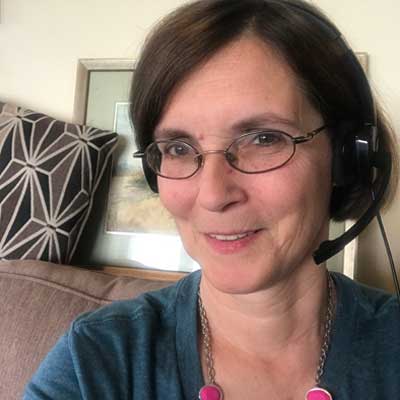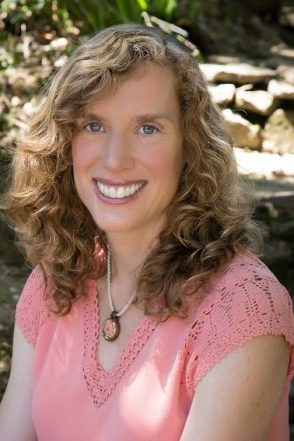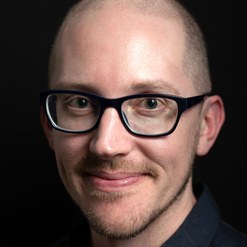Online Course Building Lessons (From Successful Course Creators)
Jessica Glendinning
The path to creating a successful online course can be lonely and confusing.
Sometimes it seems like the internet (and social media specifically) is full of people claiming that they hold the key to an unending flow of passive income via online courses. Work from a tropical beach! Or better yet, never work another day in your life!
And then there’s the other side — the cynics loudly declaring the death of online courses. The market is saturated! It’s a trend that has outlived its expiration date!
So between the gurus promising riches and the skeptics claiming there’s no market left, who should you believe?
The team at Mirasee believes in the future of online courses, and we even teach you how to create a successful online course. But we also don’t expect you to take our word for it.
That’s where our successful students come in.
Yes, the methods Danny teaches worked for him as he was building Mirasee from the ground up — but they also still work for our students today.
To give you a peek behind the curtain, we interviewed a few of our successful students to get their take on the “do’s” and “don’ts” of online course building.
We asked them two important questions:
- If you were someone’s online course “coach,” what would you say is the most important thing for them to know about creating and launching an online course?
- What words of wisdom or mindset hacks would you pass along to an aspiring online course builder?
The answers they gave us point to one thing: there’s still success to be had by building online courses. It just takes hard work, and a few special skills.
Let’s dive in.
Our first interviewee points out the importance of creating a connection with your students, something that Mirasee believes is key to success.
1. Build Relationships with Your Students
First up is Andrea Harrison, who teaches a number of different courses centered around how to be the best human partner for your sporting animal companions (dogs and horses).
She brings us four important concepts that have helped her create and sell multiple successful online courses.

ANDREA HARRISON
“I am a big believer in planning and delivering more than you promise.”
While most of my courses are hands-on, even when I have a self-directed course I make sure to sprinkle in some encouragement for students to connect with me. When they do, I reply. Even short responses can be inspiring for students.
This leads indirectly to the single most important thing for me: relationships.
I suppose it might sound funny for an introvert like me to say, but without relationships you will teach once. That person might successfully complete your course, but they won’t engage in other things you do, and won’t refer other people to you.
Relationship IS possible to develop online but it takes effort and creative thinking. In the long run, it is very worth it.
“Take imperfect action.”
Teaching is hard work, and if you aren’t experienced it can be very disheartening to teach a small class. But those small classes let you cut your teeth successfully and become a better instructor and facilitator.
Waiting for things to be perfect – or to be just like anyone else – is not likely to happen, so you might as well do it.
Most importantly, talk to people. Find out what they don’t know, and see how you can help them fill the gaps between where they are now and where they want to be.
“Slice, slice, slice it down!”
Be a splicer not a lumper. If you throw too much at anyone (of any species honestly!) they will be overwhelmed and unable to learn.
Make a course smaller than you think necessary (in terms of content) and let your students tell you if they are ready for more. We all have to hear things at least 7 times before it sticks and it takes 10,000 hours of practice to be an expert.
“Be kind.”
Give your students the time they need to excel. Our job is to build confidence and courage — not to diminish people.
Feedback needs to be constructive to be meaningful but it need not be cruel or thoughtless. You can be clear and kind at the same time.
Next up, we touch on a concept that Danny has taught for years now.
2. Don’t Disappear into Your Bat Cave
Jennifer Jackson teaches women how to end their struggle with food cravings, emotional eating, yo-yo dieting, and negative body image.
Her current course, The Missing PEACE to Weight Loss, shows women how to shift out of these old programs into self-love, self-care, and self-discovery. As part of her course launch, she is running a free workshop teaching how to dissolve food cravings.
Today, she shares the two biggest lessons from her time as a student with Mirasee that have helped her get to where she is today.

JENNIFER JACKSON:
Tap Away Food Cravings Workshop
“Launch a pilot first.”
My single biggest learning in the Course Builder’s Laboratory (CBL) was the concept of launching a pilot first.
A year ago I knew I wanted to create a course, but – just like Danny describes – I pictured myself hiding out in my bat cave for a year. Struggling with technology, not knowing what to do, and then perhaps not ever getting my course off the ground.
It wasn’t a very motivating picture! But the way CBL spells out launching a pilot step-by-step made things so doable… without needing fancy technology, a big list, or any of the other things you think you might need!
“Failure is part of the process.”
After the pilot concept, I think the biggest thing I got out of CBL was the mindset of resilience, and that failure is normal!
That was not part of my mindset before, and I struggled with it constantly. Embracing “failure” as learning was huge.
My first pilot did NOT succeed in the way I had hoped. And it was both a huge learning experience and didn’t in any way feel like a failure.
This was largely because of the emphasis (over and over) that learning from less than stellar results is just as important and getting the results you want.
Another way to ensure success is to make a plan… and stick to it.
3. Don’t Skip Steps
Nathan Lively teaches about sound system design and optimization for live events (concerts, corporate, theaters, and other venues).
He is another CBL student who has launched multiple online courses, and learned quite a bit in the process. He shares three of his top tips below.

NATHAN LIVELY:
Pro Audio Workshop: Seeing Sound
“Do not skip any of the first steps.”
I have launched more failures than successes, and there is nothing I have found that will 100% predict success. But, if I complete every step it is much more likely that the pilot will succeed. When I have tried shortcuts, they almost always fail.
One of the most important first steps is to talk to your audience. Interview at least 20 potential students before you move forward with an idea. And once you have a good idea, then you can do a follow-up interview to make an offer.
“Don’t shy away from technical courses.”
Technical courses are more difficult to produce in every way, but are seen as more valuable and therefore easier to sell.
I tried several times to sell courses on career coaching and business building, which I am positive would have given my students bigger short-term and long-term results than technical training. But no one bought them — because sound engineers don’t buy career coaching. They believe that their worth lies completely in their technical skills.
If you want a course that sells, look at what your potential students are already spending money on. Which leads back to…
“Talk to your customers.”
Read The Mom Test. It supports what Danny teaches and will help with successfully launching your courses.
Editor’s note: The full title of the book Nathan recommends is The Mom Test: How to talk to customers & learn if your business is a good idea when everyone is lying to you, by Rob Fitzpatrick.
And in case the importance of talking to your potential students hasn’t quite sunk in yet 😉 , let’s check in with our final successful course builder.
4. Put Yourself in Your Customer’s Shoes
Staci Sprout’s work focuses on helping women with intimacy and sexual problems. When she first joined Mirasee’s Course Builder’s Laboratory, she had planned to create a single training program called Best Practices for Treating Women with Love, Sex and Relationship Addictions.
Today, instead of a single course, she has successfully completed four pilot trainings centered around the same course material, and is now starting her online class production and recording. Today she shares four of the lessons she has learned along the way.

STACI SPROUT
“Interviews can be fun!”
I initially balked at doing the field research. After my CBL coach insisted, I ended up completing 46 interviews with industry experts. Once I started, I couldn’t stop because the talks were fascinating and SO informative!
I would never have believed how each step of the piloting process would bring unexpected opportunities, new professional relationships, and collaborations my way. And it’s been SO fun to get paid for content I planned to develop anyway, receiving content-refining feedback as I go!
“Listen to the experts.”
When you have a class to teach, it’s easy to think you know how to do that online, and know exactly what your class should be.
I was known in my field and had published a book on the topic already, but that didn’t mean I knew how to translate what I knew to an online delivery. Nor how to focus the information toward what people most needed. Being a part of the group coaching was invaluable to help me see this.
It’s really important to get out of isolation and get into humility — be a student again.
“Do the work.”
If you get stuck, get help to break your blocks.
Most of my blocks were negative childhood messages, and I needed to work through those in personal therapy.
When you get feedback like this (from a psychiatrist from another country) it is SO rewarding and worth going to any lengths to get your message out there! “I really enjoyed the [Best Practices] course. I found the tools that you provided most useful with all my patients.”
“You don’t have to spend a lot of money to make something wonderful.”
I took the plunge [and purchased CBL] because someone said they did and the course paid for itself. That has been my experience too.
More than just paying for itself plus profit, taking CBL and the course creation work has powerfully expanded my career, and catapulted me into a new arena in my education opportunities as well.
And I can keep creating more classes over time — as I grow, so can my classes!
So there you have it — words of wisdom from people just like you, who have navigated the road to building successful online courses.
Course Creation Success is Closer Than You Think
Hopefully the road ahead no longer looks quite so confusing, or lonely!
With a little bit of hard work – building relationships, learning to fail forward, putting a plan in place, and talking to your customers – you can find yourself in the “successful course creators club.”
And if you could still use a helping hand to figure out exactly what your first (or next) online course looks like, sign up for our free Course Builder’s Bootcamp.
Let’s Start Building Your Online Course!
In our FREE Hybrid Courses Bootcamp, we’ll walk you through how to transform your knowledge and expertise into a profitable online course… one your students will love.
Amar Kumar
Hello Jessica,
Indeed, creating an online course is a great way to level-up your blog or website. With an online course, you can not only present yourself as a leader in your industry but make passive income from your website.
Gone are the days when you could just promise your prospects that you are worth investing in – now you have to prove it and there is no better way of demonstrating your expertise than by creating an online course.
When you are running a online course, you need to think only about your skills, talents and life experiences that you have been through. Eventually, thanks for putting these valuable points for us.
With best wishes,
Amar Kumar
Jessica Glendinning
Thanks, Amar. This is so true: “Gone are the days when you could just promise your prospects that you are worth investing in.”